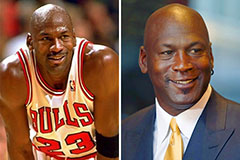When you think about martial arts, do you lean more towards the standard practices or the contemporary fight sporting activities? Each path supplies distinct advantages and experiences, shaped by their approaches and training approaches. https://www.austin360.com/story/entertainment/2022/08/03/martial-artist-damon-stith-places-african-warrior-tradition-center/7475905001/ emphasize individual growth and technique, while contemporary combat sports concentrate on competition and performance. Comprehending martial arts can can direct you in selecting the right strategy for your journey. Yet how do these distinctions show up in training and viewpoint?
The Ideology and Background Behind Standard Martial arts
While lots of people associate martial arts with physical combat, the viewpoint and background behind standard martial arts run much deeper. You'll find that these self-controls highlight personal growth, self-control, and regard.
Originating from ancient methods, traditional martial arts were typically established for Self-Defense and spiritual growth. They symbolize principles such as balance, harmony, and self-control, directing specialists beyond plain fighting skills.
As you train, you'll not only find out methods however additionally get insights into the culture and values that formed these arts. The routines and practices, often given with generations, foster a feeling of community and belonging.
The Competitive Nature of Modern Fight Sports
Modern combat sporting activities have transformed the landscape of martial arts into a highly affordable arena, where professional athletes challenge in an examination of skill, approach, and endurance.
You'll discover that competitions are usually organized with strict rules and regulations, making sure fair game and security. These occasions attract huge audiences, fueling the excitement and intensity of competitions.
Athletes train carefully, not just for physical expertise yet also for mental sturdiness, recognizing that every detail counts in the ring. The adrenaline thrill during competitors is palpable, as competitors push their restrictions to claim triumph.
Followers appreciate the athleticism and artistry involved, making modern-day combat sporting activities a thrilling phenomenon that continues to evolve and astound lovers worldwide.
Training Methods and Techniques: A Comparative Analysis
The competitive ambience of contemporary fight sports demands ingenious training approaches that vary substantially from typical martial arts.
In modern training, you'll concentrate on specific techniques, sparring, and conditioning, commonly using drills that mimic genuine battle scenarios. You'll see an emphasis on quantifiable performance and regular competitors to analyze your abilities.
On the other hand, standard martial arts focus on types, katas, and thoughtful teachings, typically highlighting discipline and regard over competition.
Training is generally much less extreme and might involve recurring technique rather than real-time sparring.
While both techniques develop skill and fitness, contemporary combat sports offer a more vibrant and adaptable training atmosphere, preparing you for instant difficulties in the ring or cage.
Choose the course that lines up with your goals and rate of interests.
Verdict
In selecting in between typical martial arts and contemporary combat sporting activities, it really comes down to what you value many. If you're trying to find personal development, self-control, and a sense of area, typical arts could be your finest fit. But if you thrive on competitors and real-time difficulties, modern-day battle sporting activities could be the method to go. Eventually, both courses supply special advantages, so it's everything about straightening your training with your personal goals and passions.

 Jonathan Lipnicki Then & Now!
Jonathan Lipnicki Then & Now! Kelly McGillis Then & Now!
Kelly McGillis Then & Now! Bug Hall Then & Now!
Bug Hall Then & Now! Michael Jordan Then & Now!
Michael Jordan Then & Now! Erik von Detten Then & Now!
Erik von Detten Then & Now!